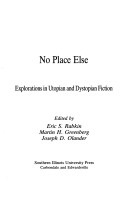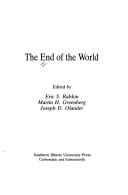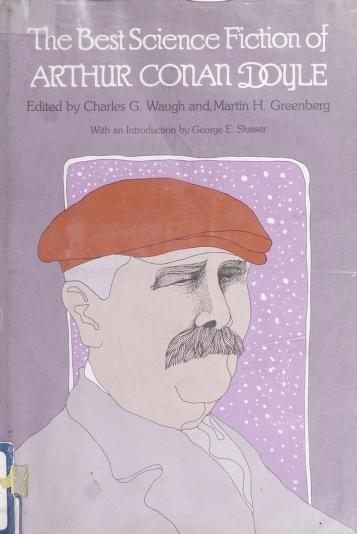Alternatives S.
6 total works
Writers have created fictions of social perfection at least since Plato s "Republic. "Sir Thomas More gave this thread of intellectual history a name when he called his contribution to it "Utopia, "Greek for "no" "place."With each subsequent author cognizant of his predecessors and subject to altered real-world conditions which suggest ever-new causes for hope and alarm, no place changed. The fourteen essays presented in this book critically assess man s fascination with and seeking for no place. In discussing these central fictions, the contributors see no place from diverse perspectives: the sociological, the psychological, the political, the aesthetic. In revealing the roots of these works, the contributors cast back along the whole length of utopian thought. Each essay stands alone; together, the essays make clear what no place means today. While it may be true that no place has always seemed elsewhere or elsewhen, in fact all utopian fiction whirls contemporary actors through a costume dance no place else but here. from the PrefaceThe contributors are Eric S. Rabkin, B. G. Knepper, Thomas J. Remington, Gorman Beauchamp, William Matter, Ken Davis, Kenneth M. Roemer, William Steinhoff, Howard Segal, Jack Zipes, Kathleen Woodward, Merritt Abrash, and James W. Bittner."
The Magazine of Fantasy and Science Fiction
by Edward L Ferman and Martin Greenberg
Published 1 July 1981
The April 1965 issue of "The Magazine of Fantasy and Science Fiction "is a landmark in the history of science fiction because it was the first issue of that publication to have been edited by Edward L. Ferman, who is widely recognized as one of the outstanding editors in the field.This issue marked the first time that a cartoon by Gahan Wilson was published. The issue is further distinguished by Poul Anderson s Arsenal Port, the second in his trilogy of space privateers; an early story from Robert Rohrer, Keep Them Happy; Gerald Jonas s poem Imaginary Numbers in a Real Garden; Basil Davenport s thoughtful review of a number of contemporary books including Isaac Bashevis Singer s "Short Friday "and William Golding s "The Spire; "TP Caravan s wry relation of a Blind Date; Roderic C. Hodgins s The History of Doctor Frost; Jane Beauclerk s evocative Lord Moon; Isaac Asimov s discussion of The Certainty of Uncertainty and his poignant Eyes Do More Than See; and Len Guttridge s whimsical Aunt Millicent at the Races. As in the previous facsimile in this series, the editors add specially invited memoirs from Poul Anderson, Theodore Thomas, Isaac Asimov, Robert Rohrer, Roderic C. Hodgins, Jane Beauclerk, Len Guttridge, and Bert Tanner together with their own observations and commentary to create a volume of unusual merit."
Robots, Androids, and Mechanical Oddities
by Philip K. Dick, Patricia S Warrick, and Martin Greenberg
Published 1 March 1986
What is human? What is a machine? How do they differ? Or do they?In these 15 stories about robots and androids, Philip K. Dick asks these questions. The answers differ with each story in the fictional world and in the exploring mind of Dick the only certainty is change but the author establishes some guidelines: To be human, one must maintain his intellectual and spiritual freedom at all costs. He must refuse obedience to any ideology; he must remain unpredictable, unfettered by patterns and routines. "
The End of the World
by Eric S. Rabkin, Martin Greenberg, and Joseph D. Olander
Published 1 July 1983
The essays selected by the editors to explore these apocalyptic visions are: The Remaking of Zero: Beginning at the End, by Gary K. Wolfe; The Lone Survivor, by Robert Plank; Ambiguous Apocalypse: Transcendental Versions of the End, by Robert Galbreath; World s End: The Imagination of Catastrophe, by W. Warren Wagar; Man-Made Catastrophes, by Brian Stableford; and The Rebellion of Nature, by W. Warren Wagar.Wolfe sees in these postholocaust narratives a central attraction the mythic power inherent in the very conception of a remade world. This power derives from three sources: the emergence of a new order from the ashes of the old system, and thus a kind of denial of death; the reinforcement of one set of values as opposed to another; and as something always replaces whatever was destroyed, a promise that nothing can annihilate humanity."
The Best Science Fiction of Arthur Conan Doyle
by Charles Waugh, Martin Greenberg, and Arthur Conan Doyle
Published 1 December 1981
In The Horror of the Heights, aviator Joyce-Armstrong continually asks, And where, pray, is Lt. Myrtle s head? At 43,000 feet, beset by creatures of an air jungle, Joyce-Armstrong, to his immense regret, learns exactly what happened to Myrtle s head. In The American s Tale a quiet Englishman and an American bully tangle. Only one survives, and the cause of death is not human. A crowd of people in The Lift finds itself at the mercy of a fanatic who decides he is an avenging Jehovah. In The Great Brown-Pericord Motor, two inventors devise a wonderful machinebut greed intercedes.Two Sherlock Holmes stories confront crime with Holmes s customary brilliance and Watson s humbling help: The Adventure of the Devil s Foot and The Adventure of the Creeping Man. And two stories involving Professor Challenger who is Sherlock Holmes writ gigantic and outrageous: When the World Screamed and The Disintegration Machine. Challenger is an arrogant genius, but on the side of right.In Through the Veil, a man and his wife face death when they slip from their own time to another, more primitive life. The Los Amigos Fiasco features an attempt by the town of Los Amigos to electrocute the evil Duncan Warner. But the deadly volts come as a wondrous gift to the man the executioners thought they could kill. The Great Keinplatz Experiment tells a droll tale of the chaos that ensues when the spirit of a drunken, irresolute student enters the body of a grave professor and the student receives the spirit of the professor. The Terror of Blue John Gap tells of a blind, brute force loosed upon the world through a tunnel dug by the ancient Romans. The Last Galley shows Carthage s fall to Rome, tells of a seer who predicts that Rome, too, will fall. Danger is an action story warning Britain, showing how Captain Sirius, with the world s smallest navy of submarines, literally starves mighty Britain into submission."
These 14 essays were presented at the Fourth Eaton Conference, which convened to create a broad dialogue concerning the importance of science fiction and fantasy in contemporary film. Another goal was to seek in the history and essential nature of cinema the roots of the increasing popularity of science fiction and fantasy.Using very different methods and widely diverse ideas of what fantasy is and where its center exists, these scholars and critics cover the entire span of western dramafrom Melies and Lang to recent films such as "E.T., the Extra-Terrestrial "and "Raiders of the Lost Ark.""




